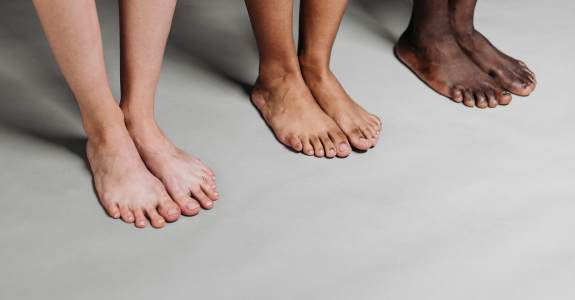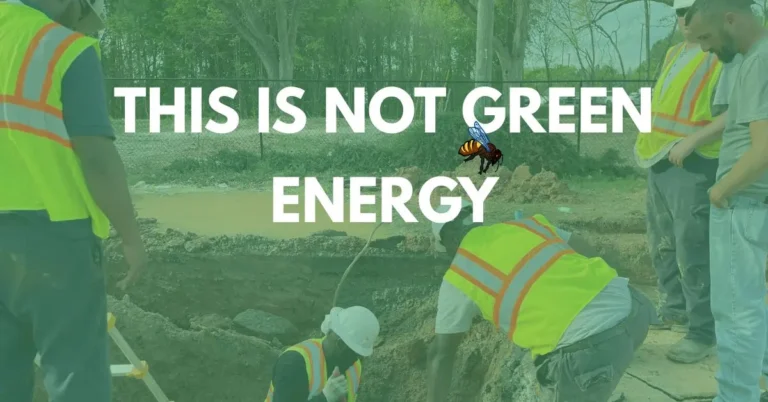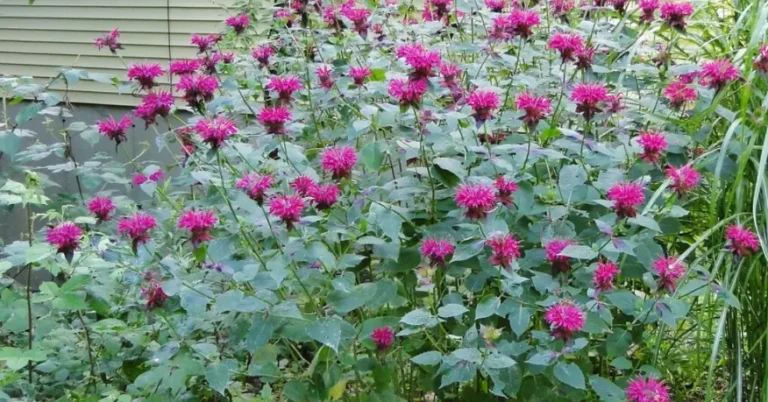Say goodbye to embarrassing feet with these natural home foot care tips! Bee barefoot with pride!
What is Ugly Feet Syndrome?
Ugly Feet Syndrome is a varied collection of complaints people have about their feet that cause them severe embarrassment. Dry or cracked heels top the list, but bunions, callouses, hammer toes, and ingrown toenails are other common gripes. Many people avoid exposing their feet to the public for fear they will be judged.
The treatment for Ugly Feet Syndrome usually includes following one of two paths: frequent trips to salons for pedicures, or self-care efforts at home. Natural pedicures are less time intensive and definitely cost less money!
I have to bee honest – the Queen coined this term herself after spending a lot of time speaking with women about their ‘ugly feet.’ You are not alone if you think you are the only one with ugly feet!
Research-backed benefits of going barefoot
There are are actually many benefits to going barefoot, but people are embarrassed about their feet. Ugly Feet Syndrome can stop people from experiencing barefoot yoga classes, wearing open toe sandals or visiting the beach, amongst other things. Foot insecurity can even cause intimacy issues.
Podiatrists are medical doctors with expertise in the treatment of disorders related to the foot, ankle, and related structures of the leg. Most people wait too long before making an appointment with a podiatrist. Why? They are ashamed of their feet or think the problem will go away on its own.
Research shows going barefoot is good for your health

There’s always two sides to every argument. Nay-sayers focus on the potential injuries associated with going barefoot. An uneven or rough surface could cause you to lose your balance. It’s possible that you could step on a piece of glass, or get a splinter without any protection on your feet. Leaving your feet exposed can increase the likelihood of a foot infection. All true.

But there is some really interesting research around earthing, (also called grounding), which includes the practice of walking barefoot. Simply put, the concept is based on the fact that the central nervous system of the human body works through electrical impulses. The Earth carries a negative charge and through earthing, we can discharge excess energy that can build up in our body.
Walking barefoot in direct contact with the earth — grass, soil, sand, bodies of water, and even concrete — is considered the simplest form of earthing. You can also lie down to get the benefits. Commercial products like earthing mattresses, mats, and sheets are available and have been included in some studies as well. A growing body of research supports earthing can reduce inflammation, reduce cortisol levels, and increase healing. Blood pressure reduction and mood improvements have also been noted after earthing for 20-30 minutes.
Don’t Let Ugly Feet Syndrome Hold You Back
So don’t let your ‘ugly feet’ stop you from the benefits of being barefoot. While some foot problems need the help of a professional podiatrist, there are some simple home foot care habits you can start to practice that will get you feeling good about your feet.

Home Foot Care Tips For Bee-u-t-full Feet
Treating yourself to a natural pedicure at home is a smart thing to do. You can avoid products and the salon environment that can be toxic to your health and still take care of your feet.
Easy home foot care practices can make sure your have the prettiest feet around, and those habits can save you lots of money too. The average cost of a salon pedicure ranges from $35 – $55 dollars.

- ALWAYS START WITH CLEAN FEET. Your feet should be cleaned with soap and water on a daily basis. Soap, water, rinse, dry
- SOAK YOUR FEET AT LEAST ONCE A MONTH – use enough warm water to cover your feet up to your ankles. Add 1 Tablespoon of Epsom Salts and relax – for no more than 10 minutes. Longer is not better. And don’t bee tempted to add extra Epsom salts. Again, more does not mean better. Rinse your feet and pat them dry. Don’t forget to dry between your toes
- KEEP YOUR TOENAILS TRIMMED Use clean clippers or nail scissors to cut your toenails straight across. They should be long enough to that the corners are loose against the skin at the sides. See the image below from the National Institutes of Health: How to Cut Toenails Properly.
- GENTLY EXFOLIATE YOUR FEET ONCE A WEEK. Gently. There are different ways you can exfoliate, but the key is not to be too aggressive. If you are too rough on your feet, your body will build up defenses to protect them. Rough toweling, foot rasps, foot files, and foot graters are not recommended.
- Pumice stones are popular (Backyard Bees makes a sweet a Peppermint Pumice Bar Soap that people adore!) Some people use salt scrubs, a mix of dead sea salt and oil similar to this Coffee Calendula Scrub. It is always important to rinse well and to pat your feet dry.
- MOISTURIZE YOUR FEET WITH A BEESWAX BASED MOISTURIZER. Foot or heel balms made with beeswax have multiple properties that make them superior to water-based lotions. Sleepy Time Overnight Foot Balm is a natural option by Backyard Bees.
- Beeswax has antiseptic properties that helps protect the skin against pathogens. It also contains beta-carotene which can help in healing and skin regeneration. Beeswax balms help to soften skin and and protect against and reduce moisture loss. You can read more about the research review by Fratini, et al if you are curious.
A Word (or two) About Salon Pedicures
People spend a lot of money on their feet
Toenails grow really slowly, just about 1.5 mm of growth per month. Research shows that they grow even slower as you age. Yet many women have standing pedicure appointments every two weeks. The average woman in the US spends about $1,345 per year on mani/pedis.
Keeping your feet clean and your toe nails trimmed are two of the cornerstones for healthy feet. Pedicures are not a medical necessity, but if you choose to indulge, podiatrists recommend no more than once every six to eight weeks. A natural pedicure at home is much quicker and less expensive, but still feels just as good.
Overdoing can be harmful to your health
The main problem with frequent pedicures is the risk of over exfoliating. Depending on the tools used and the technique of your nail technician, frequent pedicures can traumatize the the skin on your heels, causing it grow back thicker and harder. It is similar to a callous on your hand when you repeatedly use a tool that rubs against it. The skin on the outside gets thick and dry, and often looks white and chalky.

Other risks include acquired infections from improperly cleaned tools. Make sure your salon is licensed and inspected by the state. In New York, a nail technician must complete a 250-hour approved course of study and pass both the New York State written and practical examinations. A licensed technician will be trained in sterilization procedures as well as technique.
Conclusion 25% of your bones are in your feet!
The human skeleton has 206 bones and 52 of them are in your feet – that’s 25% of your body! Your feet may be dirty. They may be smelly. They may be ugly. But they deserve your love and respect! Bee grateful for the support they give you! Give yourself a natural pedicure today!



